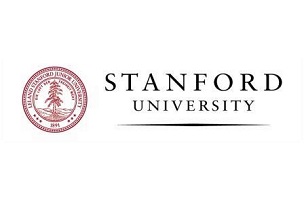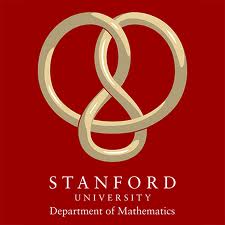


|

|
All talks will be in Room 380C in the basement of the Math Building.
| Saturday, Feb 1 | Sunday, Feb 2 | ||
| 9:45-10:15 | Breakfast | 9:45-10:15 | Breakfast |
| 10:15-11:05 | Sara Billey | 10:15-11:05 | Nicolai Reshetikhin |
| 11:15-12:05 | Peter Tingley | 11:15-12:05 | You Qi |
| 12:05-1:30 | Lunch | ||
| 1:30-2:20 | Anne Schilling | ||
| 2:20-2:50 | Coffee | ||
| 2:50-3:40 | Alistair Savage | ||
| 4:00-4:50 | Harold Williams | ||
| Sara Billey (University of Washington) |
| Coxeter-Knuth Graphs and a signed Little map |
|
Abstract. We propose an analog of the Little map for reduced expressions for signed permutations. We show that this map respects the transition equations derived from Chevellay's formula on Schubert classes. We discuss many nice properties of the signed Little map which generalize recent work of Hamaker and Young in type A where they proved Lam's conjecture. As a key step in this word, we define shifted dual equivalence graphs building on work of Assaf and Haiman and prove they can be characterized by axioms. These graphs are closely related to both the signed Little map and to the Coxeter-Knuth relations of type B due to Kraskiewicz. |
| You Qi (UC Berkeley) |
| Categorification of Small Quantum Groups |
|
Abstract. We propose an algebraic approach to categorification of quantum groups at a prime root of unity, with the hope of eventually categorifying Witten-Reshetikhin-Turaev three-manifold invariants. This is joint work with Mikhail Khovanov. |
| Nicolai Reshetikhin (UC Berkeley) |
| Quantum integrable spin chains with reflecting boundary |
|
Abstract. This talk is a survey of old and recent results on quantum integrable spin chains with special type of integrable boundary conditions called reflecting boundary conditions. These spin chains are related to algebra co-modules in Hopf algebras. |
| Alistair Savage (University of Ottawa) |
| Towers of algebras categorify the Heisenberg double |
|
Abstract. A tower of algebras is a graded algebra such that each graded piece is itself an algebra (with a different multiplication). Classic examples include the towers of group algebras of symmetric groups, Hecke algebras of type A, and nilcoxeter algebras. It is known that the Grothendieck groups of towers of algebras satisfying some natural conditions are Hopf algebras, with the product and coproduct coming from induction and restriction functors. We will discuss how certain induction and restriction functors on the category of modules over a tower of algebras categorify the so-called Heisenberg double of the Hopf algebra associated to that tower. In addition, we prove a Stone-von Neumann type theorem in this general setting. As special cases of our categorification theorem, we recover results of Geissinger, Zelevinsky, and others (for the case of symmetric groups, where the Heisenberg double is the infinite rank Heisenberg algebra) and Khovanov (for the case of nilcoxeter algebras, where the Heisenberg double is the Weyl algebra). For the tower of 0-Hecke algebras, we obtain an algebra that we call the quasi-Heisenberg algebra. As an application of our Stone-von Neumann type theorem in this case, we obtain a new, representation theoretic, proof of the fact that the algebra of quasisymmetric functions is free as a module over the algebra of symmetric functions. (This is joint work with Oded Yacobi.) |
| Anne Schilling (UC Davis) |
| Crystal operators and flag Gromov-Witten invariants |
|
Abstract. We introduce crystal operators on a subset of affine tableaux and prove that a large class of 3-point Gromov--Witten invariants of complete flag varieties for $\mathbb C^n$ enumerate the highest weight elements under these operators. This is achieved by defining a sign-reversing involution on the affine tableaux that appear in the product of a Schur times a $k$-Schur function. Special cases of our results include the Schubert structure constants in a product of a Schubert polynomial (and the quantum generalization) times a Schur function $s_\lambda$ where $|\lambda^c|< n$. Another by-product gives the fusion coefficients for the Verlinde algebra when $|\lambda^c|< n$. We also relate the $k$-charge of a $t$-deformation of the $k$-Schur functions to the energy function of Kirillov--Reshetikhin crystals by providing a new description of the Pieri rule for $k$-Schur functions in terms of $k$-bounded partitions. (This is joint work with Jennifer Morse.) |
| Peter Tingley (Loyola University) |
| Affine Mirkovic-Vilonen polytopes and PBW bases |
|
Abstract. Mirkovic-Vilonen (MV) polytopes give nice combinatorial realizations of Kashiwara's crystals for a complex simple Lie algebra. These polytopes were originally defined using the geometry of the affine grassmannian, but they also arise in other contexts, including PBW bases, quiver varieties, and Khovanov-Lauda-Rouquier (KLR) algebras. These ideas make sense for more general Kac-Moody algebras, giving various ways to extend the theory. The story is nicest in affine type, where all the constructions lead to the same (decorated) affine MV polytopes. I will explain what these are, why they are useful, and various places they show up. In particular I will discuss recent work with Dinakar Muthiah showing how to construct affine MV polytopes using affine PBW bases. |
| Harold Williams (UC Berkeley) |
| Quivers and Toda Systems |
|
Abstract.
Take your favorite finite-type Dynkin diagram, equip it with a sink-source
orientation, and take its (square) product with a Kronecker quiver: for
$\hbox{SU}(N)$ the result should be a quiver that looks something like $N-1$
squares glued together side-by-side, with all the vertical arrows doubled. In
the last decade this quiver has turned out to lead a double life in mathematics
and physics: physically it encodes part of the BPS spectrum of pure $N=2$
Yang-Mills theory, or the intersection numbers of a certain homology basis of
the corresponding Seiberg-Witten curves. Mathematically it describes the
cluster coordinates on a special double Bruhat cell of the corresponding Lie
group (hence encodes its Poisson and totally positive structure) which in
particular is the phase space of an open Toda system. |